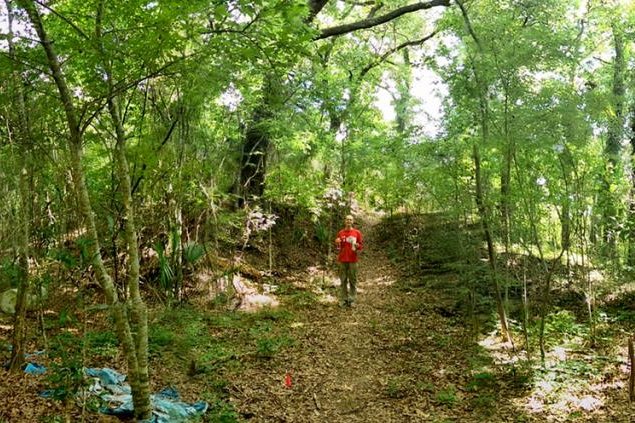The mound at Grand Caillou. Photo by Jayur Mehta
May 22 (UPI) -- New research into the mounds of coastal Louisiana suggests early mound builders selected building sites and materials to ensure structural integrity and longevity.
In addition to offering a broad survey of mound building in the region, the new study -- published this week in the Journal of Island and Coastal Archaeology -- provides an in-depth look at the timeline of human and natural events that influenced the evolution of a mound site known as Grand Caillou.
Researchers used a combination of radiocarbon dating and carbon-isotope analysis to date sediment layers and ceramic fragments. The analysis helped them determine when the land beneath the Grand Caillou mounds was formed and when the first humans first arrived.
"We wanted to understand at a deeper level how indigenous peoples of the coast were choosing where to build their villages," Jayur Mehta, an anthropology professor at the University of Illinois, said in a news release.
Stable and permanent land on the Louisiana coast can't be taken for granted. For thousands of years, the waters of the Mississippi have been reshaping the delta -- depositing and eroding, building new land and washing old land away.
As a number of studies have shown, human engineering of the Mississippi River -- the building of dams and levees -- and its flow has resulted in less deposition and more subsidence, which means the region's mounds are increasingly threatened.
"Louisiana loses about two ancient mounds and/or Native American villages a year," Mehta said.
That so many mounds are still standing is a testament to the know-how of their builders, researchers argue in their new study.
Analysis suggests the lobe on which Grand Caillou was constructed stopped growing and stabilized around 800 A.D. By the time the first humans showed up to start building their mounds, around 1200 A.D., the land had been colonized by vegetation.
Analysis of the mounds themselves suggest they were constructed using a unique layering of different materials, with clay on the bottom and top, and looser sediments sandwiched in-between. This layering technique helped stabilize the mounds, protecting them against the elements.
Archeological evidence suggests the village at Grand Caillou was abandoned by 1400 A.D. Scientists found signatures of saltwater in their soil samples, which may have forced the indigenous groups to relocate.
Researchers hope their survey of Grand Caillou serves as a reminder of the important cultural legacy of some of the early inhabitants of coastal Louisiana -- a legacy increasingly at risk of being swallowed by rising tides.
"Louisiana is incredibly important in the history of ancient mound-building cultures," Mehta said. "In what is now the United States, earthen monument and mound construction began on the Louisiana coast."















